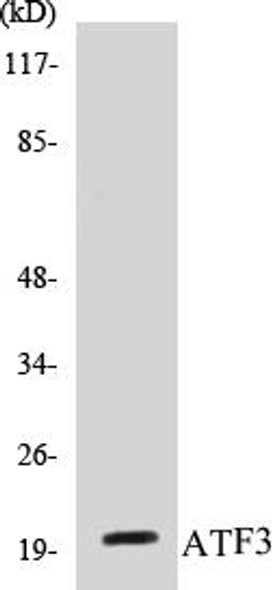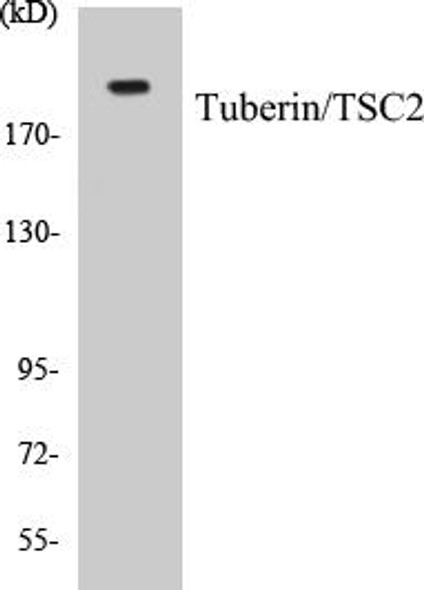Description
NM23 Colorimetric Cell-Based ELISA Kit
The NM23 Colorimetric Cell-Based ELISA Kit from Assay Genie is a cutting-edge tool for detecting NM23 protein levels in cell lysates and tissue samples. With its high sensitivity and specificity, this kit provides accurate and reproducible results, making it ideal for a variety of research applications.NM23, also known as NME1, is a multifunctional protein that plays a critical role in cell signaling, DNA repair, and metastasis suppression. Abnormal levels of NM23 have been linked to various diseases, including cancer, making it a valuable biomarker for studying disease progression and potential therapeutic interventions.
With the NM23 Colorimetric Cell-Based ELISA Kit, researchers can easily measure NM23 expression levels in a precise and efficient manner, advancing our understanding of the role of NM23 in health and disease. Order your kit today from Assay Genie and take your research to the next level.
| Product Name: | NM23 Colorimetric Cell-Based ELISA |
| Product Code: | CBCAB00337 |
| ELISA Type: | Cell-Based |
| Target: | NM23 |
| Reactivity: | Human, Mouse, Rat |
| Dynamic Range: | > 5000 Cells |
| Detection Method: | Colorimetric 450 nmStorage/Stability:4°C/6 Months |
| Format: | 96-Well Microplate |
The NM23 Colorimetric Cell-Based ELISA Kit is a convenient, lysate-free, high throughput and sensitive assay kit that can detect NM23 protein expression profile in cells. The kit can be used for measuring the relative amounts of NM23 in cultured cells as well as screening for the effects that various treatments, inhibitors (ie siRNA or chemicals), or activators have on NM23.
Qualitative determination of NM23 concentration is achieved by an indirect ELISA format. In essence, NM23 is captured by NM23-specific primary antibodies while the HRP-conjugated secondary antibodies bind the Fc region of the primary antibody. Through this binding, the HRP enzyme conjugated to the secondary antibody can catalyze a colorimetric reaction upon substrate addition. Due to the qualitative nature of the Cell-Based ELISA, multiple normalization methods are needed:
| 1. | A monoclonal antibody specific for human GAPDH is included to serve as an internal positive control in normalizing the target absorbance values. |
| 2. | Following the colorimetric measurement of HRP activity via substrate addition, the Crystal Violet whole-cell staining method may be used to determine cell density. After staining, the results can be analysed by normalizing the absorbance values to cell amounts, by which the plating difference can be adjusted. |
| Database Information: | Gene ID: 4831/654364, UniProt ID: P22392, OMIM: 156491, Unigene: Hs.463456 |
| Gene Symbol: | NME2 |
| Sub Type: | None |
| UniProt Protein Function: | NME2: Major role in the synthesis of nucleoside triphosphates other than ATP. Negatively regulates Rho activity by interacting with AKAP13/LBC. Acts as a transcriptional activator of the MYC gene; binds DNA non-specifically (PubMed:8392752). Exhibits histidine protein kinase activity. Belongs to the NDK family. 2 isoforms of the human protein are produced by alternative splicing. |
| UniProt Protein Details: | Protein type:Nucleotide Metabolism - purine; EC 2.7.13.3; Nuclear receptor co-regulator; Nucleotide Metabolism - pyrimidine; Kinase, nucleoside diphosphate; Kinase, other; EC 2.7.4.6; Other group; NDK family Chromosomal Location of Human Ortholog: 17q21.3 Cellular Component: cytoplasm; cytosol; focal adhesion; lamellipodium; nucleus; ruffle Molecular Function:nucleoside diphosphate kinase activity; protein binding; transcription factor activity Biological Process: cell adhesion; integrin-mediated signaling pathway; negative regulation of apoptosis; nucleobase, nucleoside and nucleotide interconversion; nucleoside triphosphate biosynthetic process; positive regulation of epithelial cell proliferation; positive regulation of keratinocyte differentiation; positive regulation of transcription from RNA polymerase II promoter; purine nucleotide metabolic process; pyrimidine nucleotide metabolic process; regulation of epidermis development; regulation of transcription, DNA-dependent |
| NCBI Summary: | Nucleoside diphosphate kinase (NDK) exists as a hexamer composed of 'A' (encoded by NME1) and 'B' (encoded by this gene) isoforms. Multiple alternatively spliced transcript variants have been found for this gene. Read-through transcription from the neighboring upstream gene (NME1) generates naturally-occurring transcripts (NME1-NME2) that encode a fusion protein comprised of sequence sharing identity with each individual gene product. [provided by RefSeq, Nov 2010] |
| UniProt Code: | P22392 |
| NCBI GenInfo Identifier: | 127983 |
| NCBI Gene ID: | 4831 |
| NCBI Accession: | P22392.1 |
| UniProt Secondary Accession: | P22392,Q1WM23, Q6LCT6, A8MWA3, |
| UniProt Related Accession: | P22392 |
| Molecular Weight: | 30,137 Da |
| NCBI Full Name: | Nucleoside diphosphate kinase B |
| NCBI Synonym Full Names: | NME/NM23 nucleoside diphosphate kinase 2 |
| NCBI Official Symbol: | NME2 |
| NCBI Official Synonym Symbols: | PUF; NDKB; NDPKB; NM23B; NDPK-B; NM23-H2 |
| NCBI Protein Information: | nucleoside diphosphate kinase B |
| UniProt Protein Name: | Nucleoside diphosphate kinase B |
| UniProt Synonym Protein Names: | C-myc purine-binding transcription factor PUF; Histidine protein kinase NDKB (EC:2.7.13.3); nm23-H2 |
| UniProt Gene Name: | NME2 |
| UniProt Entry Name: | NDKB_HUMAN |
| Component | Quantity |
| 96-Well Cell Culture Clear-Bottom Microplate | 2 plates |
| 10X TBS | 24 mL |
| Quenching Buffer | 24 mL |
| Blocking Buffer | 50 mL |
| 15X Wash Buffer | 50 mL |
| Primary Antibody Diluent | 12 mL |
| 100x Anti-Phospho Target Antibody | 60 µL |
| 100x Anti-Target Antibody | 60 µL |
| Anti-GAPDH Antibody | 60 µL |
| HRP-Conjugated Anti-Rabbit IgG Antibody | 12 mL |
| HRP-Conjugated Anti-Mouse IgG Antibody | 12 mL |
| SDS Solution | 12 mL |
| Stop Solution | 24 mL |
| Ready-to-Use Substrate | 12 mL |
| Crystal Violet Solution | 12 mL |
| Adhesive Plate Seals | 2 seals |
The following materials and/or equipment are NOT provided in this kit but are necessary to successfully conduct the experiment:
- Microplate reader able to measure absorbance at 450 nm and/or 595 nm for Crystal Violet Cell Staining (Optional)
- Micropipettes with capability of measuring volumes ranging from 1 µL to 1 ml
- 37% formaldehyde (Sigma Cat# F-8775) or formaldehyde from other sources
- Squirt bottle, manifold dispenser, multichannel pipette reservoir or automated microplate washer
- Graph paper or computer software capable of generating or displaying logarithmic functions
- Absorbent papers or vacuum aspirator
- Test tubes or microfuge tubes capable of storing ≥1 ml
- Poly-L-Lysine (Sigma Cat# P4832 for suspension cells)
- Orbital shaker (optional)
- Deionized or sterile water
*Note: Protocols are specific to each batch/lot. For the correct instructions please follow the protocol included in your kit.
| Step | Procedure |
| 1. | Seed 200 µL of 20,000 adherent cells in culture medium in each well of a 96-well plate. The plates included in the kit are sterile and treated for cell culture. For suspension cells and loosely attached cells, coat the plates with 100 µL of 10 µg/ml Poly-L-Lysine (not included) to each well of a 96-well plate for 30 minutes at 37°C prior to adding cells. |
| 2. | Incubate the cells for overnight at 37°C, 5% CO2. |
| 3. | Treat the cells as desired. |
| 4. | Remove the cell culture medium and rinse with 200 µL of 1x TBS, twice. |
| 5. | Fix the cells by incubating with 100 µL of Fixing Solution for 20 minutes at room temperature. The 4% formaldehyde is used for adherent cells and 8% formaldehyde is used for suspension cells and loosely attached cells. |
| 6. | Remove the Fixing Solution and wash the plate 3 times with 200 µL 1x Wash Buffer for five minutes each time with gentle shaking on the orbital shaker. The plate can be stored at 4°C for a week. |
| 7. | Add 100 µL of Quenching Buffer and incubate for 20 minutes at room temperature. |
| 8. | Wash the plate 3 times with 1x Wash Buffer for 5 minutes each time. |
| 9. | Add 200 µL of Blocking Buffer and incubate for 1 hour at room temperature. |
| 10. | Wash 3 times with 200 µL of 1x Wash Buffer for 5 minutes each time. |
| 11. | Add 50 µL of 1x primary antibodies (Anti-NM23 Antibody and/or Anti-GAPDH Antibody) to the corresponding wells, cover with Parafilm and incubate for 16 hours (overnight) at 4°C. If the target expression is known to be high, incubate for 2 hours at room temperature. |
| 12. | Wash 3 times with 200 µL of 1x Wash Buffer for 5 minutes each time. |
| 13. | Add 50 µL of 1x secondary antibodies (HRP-Conjugated AntiRabbit IgG Antibody or HRP-Conjugated Anti-Mouse IgG Antibody) to corresponding wells and incubate for 1.5 hours at room temperature. |
| 14. | Wash 3 times with 200 µL of 1x Wash Buffer for 5 minutes each time. |
| 15. | Add 50 µL of Ready-to-Use Substrate to each well and incubate for 30 minutes at room temperature in the dark. |
| 16. | Add 50 µL of Stop Solution to each well and read OD at 450 nm immediately using the microplate reader. |
(Additional Crystal Violet staining may be performed if desired – details of this may be found in the kit technical manual.)






